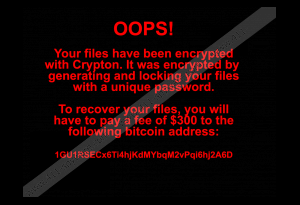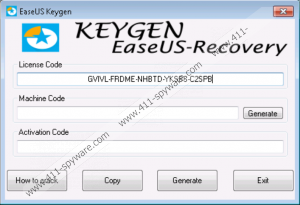Netcrypton Ransomware Removal Guide
It has been said a million times before, but we have to say it again: Do NOT download unfamiliar software. Windows users who do not follow this advice could face NETcrypton Ransomware soon. In the wild, the launcher of this malicious infection is concealed as a key generator, or “keygen,” which is the kind of software that is meant to generate valid license keys for software. Unfortunately, in most cases, keygens include malicious payloads, and so even if you do not let in ransomware, you could let in other kinds of threats by using malicious key generators. The funny thing about the infection discussed in this report is that it reveals its malicious nature. When the alleged key generator is downloaded, this warning pops up: “ARE YOU SURE YOU WANT TO EXECUTE THIS RANSOMWARE?” Obviously, once you face this message, you need to click NO, and then you need to delete NETcrypton Ransomware ASAP. If you click YES, you will still need to remove the threat, but you will also need to figure out how to decrypt your files because the ransomware will encrypt them.
When NETcrypton Ransomware invades the Windows operating system, it does one unexpected thing. If the threat is executed – which happens if you click YES – a copy of the main .exe file is created in the same directory. The name of this copy file has the same name but with one whitespace character in the front. If you have not set up your operating system to show hidden files, you will not see the copy as it will be hidden. That means that even if you remove NETcrypton Ransomware launcher file, the threat will continue running via the copy file. Besides that, the infection does not create other components. To create an illusion that the ransomware works as a key generator, a window (called “EaseUS Keygen”) imitating a key generating service is opened. That is meant to distract you while the threat is encrypting your personal files. All kinds of files all over your operating system are targeted by this threat, and if it is successful, you will find a bunch of files with the “.encrptd” extension attached to their names. If you remove the ransomware, the files will remain locked.
NETcrypton Ransomware does not receive an encryption key from an external source. In fact, it creates a key using the combination of CPU ID, HDD ID, and BIOS ID. Since these are available to you, our research team indicates that the key can be reassembled to decrypt files. Of course, you might need the help and expertise of someone more experienced to aid you properly. All in all, you definitely do not need to pay attention to the ransom demands that the devious NETcrypton Ransomware makes using the ransom note. This note is represented via your Desktop background image, and it mentions the name “Crypton,” but you must not confuse it for Crypton Ransomware, which is an entirely different threat. Of course, it is most important to discuss the ransom that is requested via the note. According to it, you need to pay a ransom of 300 US Dollars to get your files back. Since it is indicated that you would have to transfer it to 1GU1RSECx6Ti4hjKdMYbqM2vPqi6hj2A6D, which is a Bitcoin Address, you would have to purchase Bitcoin first. Of course, you should not do that since free decryption is possible. Even if you could not decrypt files or recover them from backup, you should NEVER fulfill the demands of cyber criminals.
There are only two malicious files that you need to eliminate to have NETcrypton Ransomware removed. These are the original launcher file and the hidden copy file. If you follow the instructions below, you will learn how to unhide files and delete them successfully. We are hopeful that this would be enough to get rid of the ransomware, but, just to be safe, you should install a trusted malware scanner to inspect your operating system. If any malicious files are discovered, you must locate and delete them immediately. Have you considered using anti-malware software? It can remove NETcrypton Ransomware along with other threats, and it can reliably guard you against malware in the future. If you understand the importance of that, we suggest installing anti-malware software immediately.
How to delete NETcrypton Ransomware
- Access the Control Panel menu.
- Into the search field on the right enter folder options and then open this menu.
- Click the View tab, check Show hidden files, folders, or drivers, and click OK.
- Find the launcher file ({random name}.exe) and the copy file ({ random name}.exe).
- Right-click and Delete both of the malicious files.
- Restore the preferred Desktop background image.
- Empty Recycle Bin to eliminate the infection completely.
- Install a trusted malware scanner to examine your operating system for malicious leftovers.
Netcrypton Ransomware Screenshots:



Netcrypton Ransomware technical info for manual removal:
Files Modified/Created on the system:
| # | File Name | File Size (Bytes) | File Hash |
|---|---|---|---|
| 1 | NETCrypton Ransomware.exe | 8571392 bytes | MD5: b60eb1590479a27ad9e2d64d81fa4a4c |
Memory Processes Created:
| # | Process Name | Process Filename | Main module size |
|---|---|---|---|
| 1 | NETCrypton Ransomware.exe | NETCrypton Ransomware.exe | 8571392 bytes |

